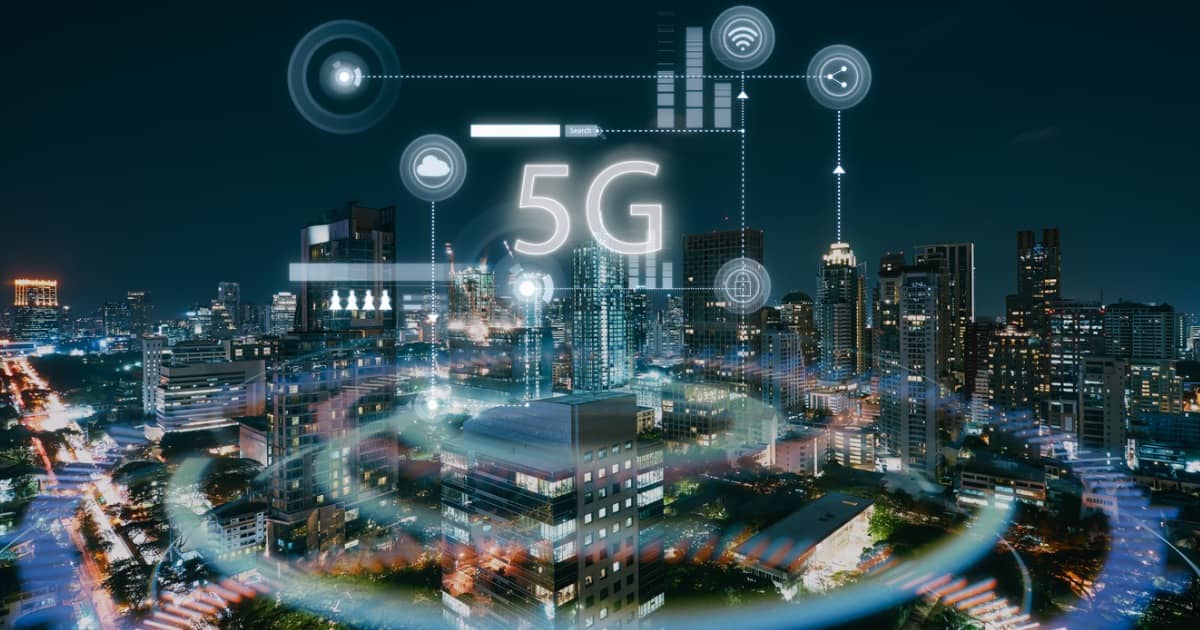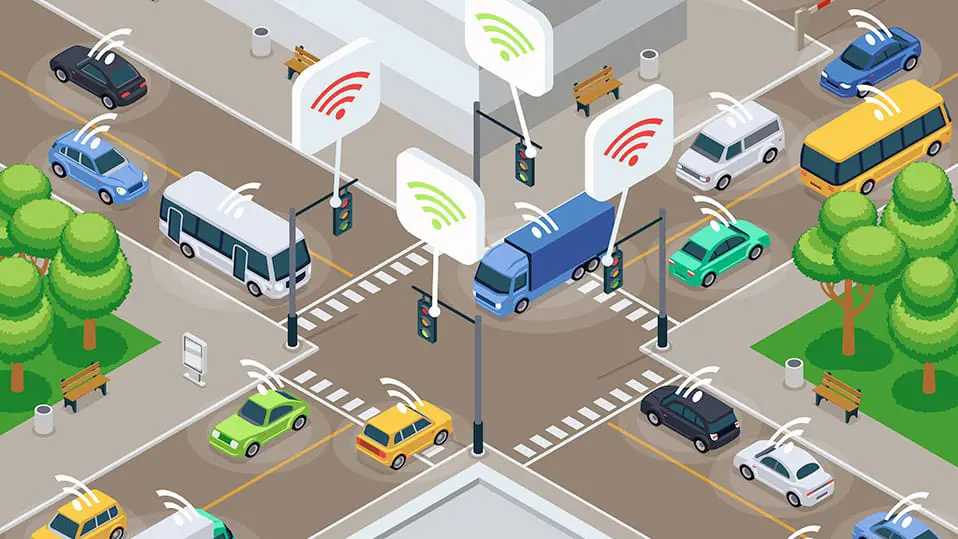Ai technology is transforming urban mobility in new york city. This includes the implementation of intelligent traffic systems and the integration of ride-sharing services to provide convenient and sustainable transportation options for everyone.
As one of the most populous cities in the world with over 8 million residents, new york city faces significant challenges in terms of traffic congestion and public transportation. However, with the help of ai technology, the city is making strides in improving urban mobility.
From analyzing traffic patterns to optimizing public transportation routes, ai is being used to create more efficient and reliable ways for people to get around the city. Additionally, ride-sharing services like uber and lyft are being integrated into existing transportation systems to provide more options and reduce the number of cars on the road. Overall, ai is revolutionizing urban mobility in new york city and has the potential to transform transportation in other cities around the world.

Credit: www.beesmart.city
Ai And Urban Traffic: New York City Case Study
How Ai Is Being Used To Manage Traffic In Nyc
Artificial intelligence (ai) is changing the face of urban mobility in new york city, and traffic management is one of the areas that have greatly benefitted. The city is known for its traffic congestion and the use of ai-enabled traffic management solutions is proving to be a game-changer.
Here are some key ways in which ai is transforming urban traffic in nyc.
Real-Time Traffic Analysis
Ai-enabled traffic management solutions in nyc can process real-time data from various sources such as cameras, traffic flow sensors, and gps devices to analyze traffic patterns. Through machine learning algorithms, the system can identify and predict traffic congestion, bottlenecks and provide real-time warnings to drivers and traffic control centers.
This capability is critical in helping to mitigate traffic congestion in high-density areas and reducing commute times for drivers.
Combining Different Data Sources To Analyze Traffic Patterns
Nyc’s smart traffic management system combines various data sources such as weather data or public transportation schedules to predict traffic patterns. Mounting ai models on a wide range of data ensures greater accuracy, enabling real-time traffic predictions with better precision.
Use Cases For Ai-Enabled Traffic Management Solutions
Ai-enabled traffic management solutions have many use cases in nyc. For example, the city’s department of transportation launched city drive live, an initiative that uses real-time data to monitor traffic in the busiest regions. Additionally, the platform can identify rogue drivers, determine their location and speed, and alert traffic authorities if necessary.
In another project, nyc partners with a technology start-up to implement adaptive traffic signal control systems powered by ai. The system uses real-time traffic data to optimize traffic flow, minimize congestion and improve overall transportation efficiency.
Ai is transforming urban mobility in nyc, and traffic management is one of the areas that have greatly benefitted. The city can leverage the capabilities of ai-enabled traffic management solutions to manage traffic congestion and improve transportation efficiency ultimately.
Ai In Public Transportation: New York City’S Mta
How Ai Is Transforming Urban Mobility: New York City Experience
New york city’s metropolitan transportation authority (mta) is one of the world’s largest public transportation systems and has been an early adopter of artificial intelligence (ai) to improve its operations. In this blog post, we will discuss the recent advancements in ai-enabled public transportation solutions in the mta and the benefits and challenges of implementing ai in public transportation systems.
Overview Of New York’S Mta (Metropolitan Transportation Authority)
The mta serves over 15 million people across new york city’s five boroughs, with more than 2 billion trips taken annually on its subways, buses, and trains. With such a large number of travelers, the mta aims to provide efficient and reliable transportation services that meet the needs of its diverse ridership.
Recent Advancements In Ai-Enabled Public Transportation Solutions
In recent years, the mta has adopted various ai-enabled solutions to improve its operations, such as:
- Automatic train supervision (ats): Ats uses ai algorithms to monitor train movements on tracks and improve safety by alerting operators of potential risks.
- Smart infrastructure: The mta uses sensors, cameras, and other connected devices to monitor the condition of tracks, substations, and other critical components, allowing for faster and more efficient maintenance.
- Predictive maintenance: The mta utilizes ai algorithms and machine learning techniques to predict potential faults before they occur, reducing delays and downtime.
Benefits Of Ai In Mta – Improved Efficiency And Accuracy
The adoption of ai-enabled solutions has resulted in several benefits for the mta, including:
- Improved reliability: With ai-powered predictive maintenance, the mta can address potential issues before they cause disruptions or delays, leading to more reliable service for riders.
- Increased efficiency: Ai-powered systems can analyze vast amounts of data in real-time, enabling the mta to make smarter and faster decisions to optimize its operations.
- Enhanced safety: With ai-enabled ats, the mta can detect and prevent potential safety hazards, making the system safer for riders and operators.
Challenges In Implementing Ai In Public Transportation Systems
While the mta has successfully implemented ai-enabled solutions, there are challenges in adopting new technologies in public transportation systems.
- Cost: Adopting ai-powered solutions can be expensive, requiring significant investment in hardware, software, and infrastructure.
- Data privacy and security: Gathering and analyzing large amounts of data can raise privacy concerns, requiring careful handling and security measures to protect sensitive information.
- Workforce training: The adoption of ai in public transportation systems requires specialized skills and training for employees, which can be a challenge to implement on a large scale.
The mta’s adoption of ai-enabled solutions is transforming urban mobility in new york city, providing safer, more efficient, and reliable services for its riders. However, there are challenges in implementing these new technologies, requiring careful planning and investment to overcome.
Ai And Ride-Sharing: The Changing Landscape Of Urban Transportation
New york city’s ride-sharing market is one of the most competitive in the world. With the introduction of ai, the ride-sharing experience in the city has witnessed a major transformation. From improved efficiency to enhanced customer experience, ai technology has revolutionized the ride-sharing landscape.
In this section, we will look at the various aspects of ride-sharing solutions in nyc, as well as the integration and impact of ai on these solutions and their customers, including improvements in routing and arrival time predictions.
Overview Of Ride-Sharing Solutions In Nyc
New york city is home to an array of ride-sharing companies that provide customers with transportation options at all hours of the day, including uber, lyft, via, and juno, among others. These ride-sharing companies, which have transformed the way people get around in the city, are known for their affordable prices, reliable services, and a great customer experience.
With millions of riders and thousands of drivers, these companies operate all across the city, providing millions of rides a month.
Integration And Impact Of Ai On Ride-Sharing Solutions
The integration of ai technology in ride-sharing solutions has transformed the experience of both drivers and riders. Ai algorithms analyze several data points, such as pick-up location, destination, traffic patterns, and driver availability, to calculate the most efficient route in real-time.
For drivers, ai-powered recommendations for pick-up locations and routes can lead to more ride requests, shorter wait times, and faster trips. The integration of ai technology also enhances the ability to detect fraud, which improves safety.
Improvements In Routing And Arrival Time Predictions
With ai-powered routing, ride-sharing solutions are now able to predict arrival times with greater accuracy. This not only helps riders avoid long wait times, but also assists drivers in planning their workday and earning potential. Ai-powered insights can also help drivers make adjustments to their routes in real-time to avoid unexpected traffic or other delays, streamlining things in even the busiest of areas.
Changing Customer Experience With The Integration Of Ai
The integration of ai has transformed ride-sharing into a personalized experience. Personalized ride experiences, based on rider preferences such as seat selection, music, temperature, and conversation preferences, have been made possible through the integration of ai tools into the ride-sharing apps.
By analyzing past rider history and behavioral patterns, ride-sharing solutions can offer customized promotions, discounts, and ride offers to riders. This has made the ride-sharing journey smooth, enjoyable, and stress-free.
Frequently Asked Questions On How Ai Is Transforming Urban Mobility: New York City Experience
What Is Urban Mobility?
Urban mobility refers to the movement of people, goods and services within urban areas.
How Is Ai Transforming Urban Mobility?
Ai is being used to improve public transport systems, reduce congestion, and enhance safety on the roads.
What Role Does Ai Play In New York City’S Transportation?
Ai is utilized in new york city to optimize traffic flow, improve public transportation and reduce emissions.
What Benefits Does Ai Offer For Urban Mobility?
Ai can improve traffic flow, reduce congestion, enhance safety, and promote eco-friendly transportation options in cities.
How Can Ai Be Integrated Into Existing Transportation Systems?
Ai can be integrated through the use of sensors, data analysis and machine learning algorithms to optimize and improve transportation systems.
Conclusion
As we can see, the use of ai in urban mobility is a game-changer for cities around the world, including new york city. Through the implementation of ai, we can streamline transportation systems, making for more efficient and sustainable modes of travel.
However, it is important to keep in mind the potential downsides of relying solely on ai for urban mobility. The need for human oversight and monitoring cannot be understated, as well as addressing issues of data privacy and security. Overall, the nyc experience demonstrates the immense potential of ai when paired with innovative and forward-thinking approaches.
As we continue to develop and improve upon these technologies, the possibilities for transformative change in urban mobility are truly endless. The future is bright for those cities that embrace this innovative technology while remaining mindful of its potential limitations.


